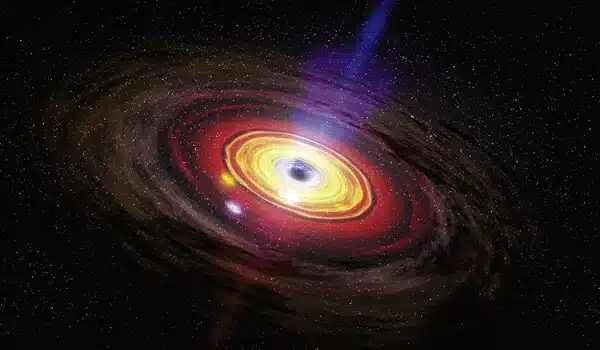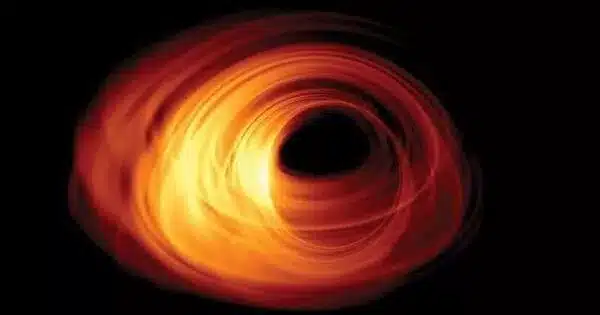Detecting an echo broadcast by our galaxy’s black hole, known as Sagittarius A* (Sgr A*), from 200 years ago would be an astounding feat, but it is now beyond our technical capabilities due to our current understanding of physics and the restrictions of the speed of light.
An multinational team of scientists revealed that Sagittarius A* (Sgr A*)1, the supermassive black hole at the center of the Milky Way, awoke from a long period of slumber some 200 years ago.
The team, lead by Frédéric Marin2, a CNRS researcher at the Astronomical Strasbourg Observatory (CNRS/University of Strasbourg), has disclosed the past awakening of this colossal object, which is four million times more massive than the Sun. Nature published their findings. Over the course of one year at the beginning of the nineteenth century, the black hole swallowed up cosmic things that came too close to it before returning to a state of dormancy.
The speed of light in a vacuum is approximately 299,792,458 meters per second (about 186,282 miles per second). This is the fastest speed at which information can travel in the universe.
No influence was felt on Earth since the distance between Sgr A* and our planet is too large (approximately two billion times the distance between the Earth and the Sun). The measured X-ray echo, however, suggests that the original intensity was at least a million times greater than that currently released by Sgr A*.
To get an idea of how intense the X-ray radiation got when the black hole awoke from its dormant state, imagine a solitary glow-worm hidden in a forest suddenly becoming as luminous as the Sun. These discoveries explain why galactic molecular clouds near Sgr A* shine brighter than usual: they are reflecting X-rays released by Sgr A* 200 years ago.
The speed of light in a vacuum is approximately 299,792,458 meters per second (about 186,282 miles per second). This is the fastest speed at which information can travel in the universe. Sgr A* is located at the center of our Milky Way galaxy, approximately 25,000 light-years away from Earth. This means that it takes light 25,000 years to travel from Sgr A* to us.

To carry out their research, the scientists used NASA’s IXPE (Imaging X-ray Polarimetry Explorer) satellite3, which was for the very first time able to detect the polarisation of this X-ray light with great precision and also determine its source, something that had previously proved impossible.
Polarised X-ray light4 acts like a compass, pointing directly to its source, Sgr A*, despite the fact that it is now nearly dead. The scientists are continuing their research on Sgr A* in order to discover the physical mechanics required for a black hole to transition from a dormant to an active state.
Black holes do not produce traditional echoes or signals that humans can detect with existing technology. They are objects with incredibly powerful gravitational fields, and their impacts on neighboring matter and stars are frequently discovered indirectly.
Footnotes
- Pronounced ‘Sagittarius A star’.
- The scientists are from laboratories in Japan, the United States, Italy, Hong Kong, Canada, Russia, Germany, the Czech Republic, the United Kingdom, Finland, Spain, the Netherlands, China and France (Observatoire Astronomique de Strasbourg (CNRS/Université de Strasbourg) and Institut de Planétologie et d ‘Astrophysique de Grenoble (CNRS/Université Grenoble Alpes)).
- They combined this data with that obtained from the European Space Agency’s XMM-Newton and NASA’s Chandra missions.
- Polarisation refers to the preferred direction of the oscillations of the electric field of a light wave.
















